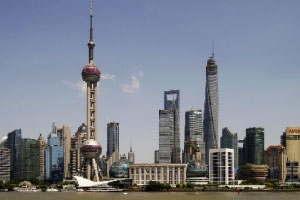
The UN reveals that the international travel and tourism industry is now worth a staggering US$1.4 trillion. According to the latest data from the UN’s World Tourism Organization (UNWTO), the world’s destinations generated US$1.23trn in income from international travellers in 2015, comprising accommodation, food and drink, entertainment, shopping and other services. Of which, China’s spending power continued to surge in 2015, rising 25% to US$292bn.

Hong Kong is the world’s second most appealing luxury retail destination after London, according to a new report from real estate consultant Jones Lang LaSalle (JLL). The Destination Retail 2016 report also reveals that 7 of the top 10 cities with the highest presence of luxury retailers are in Asia Pacific. The dominance of Asian cities in the index highlights the attractiveness of the region to retailers, thanks to its burgeoning middle classes and growing levels of affluence.

InterContinental Hotels Group (IHG) has revealed its vision for the future of luxury travel and hospitality in the next 70 years, as it celebrates its 70th anniversary. According to IHG, these include virtual reality which will become a key feature in the hotels of the future. Themes of immersive brand experiences, escapism and unattainability will be the focus of the future.

New Airline route supply: Capital Airlines, the Chinese carrier owned by the HNA Group has filed an application with the Civil Aviation Administration of China (CAAC) to operate twice weekly flights Lisbon from Hangzhou, in eastern China’s Zhejiang province, via Beijing, becoming mainland China’s first ever direct connection to Portugal.

An increasing number of Chinese travellers are shunning group tours and embracing independent travel, a new study has found. TripAdvisor found that China’s FIT market is growing strongly, driven by a rising number of younger travellers. Almost nine out of 10 (89%) Chinese FITs are aged 18-44, and English proficiency is reasonably high among Chinese FITs, of which 41% saying they can understand English. Unsurprisingly, a larger share of Chinese FITs comes from first tier cities.
Posted in News
